The SolarFarm concept
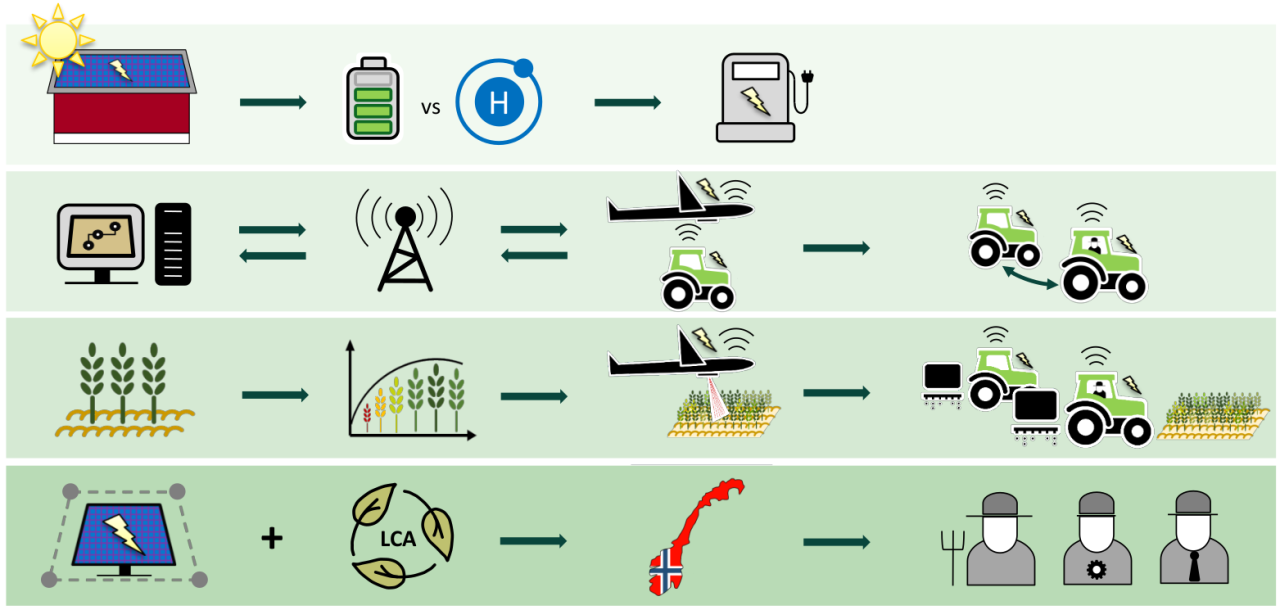
SolarFarm - at a glance
WP1 Energy production, energy carrier, and energy storage
The objective of this work package (WP) is to realize a local energy production system optimally designed to meet the demands of an electrified, low carbon emission, agricultural sector. Based on data from the base-case NIBIO-Apelsvoll on peaks and cycles in farm energy- and effect-demand (identified in WP4), different storage solutions will be evaluated. In this WP we will also study to what extent solar resources, combined with storage and the flexibility introduced by electrical vehicles, can cover the farms energy demand.
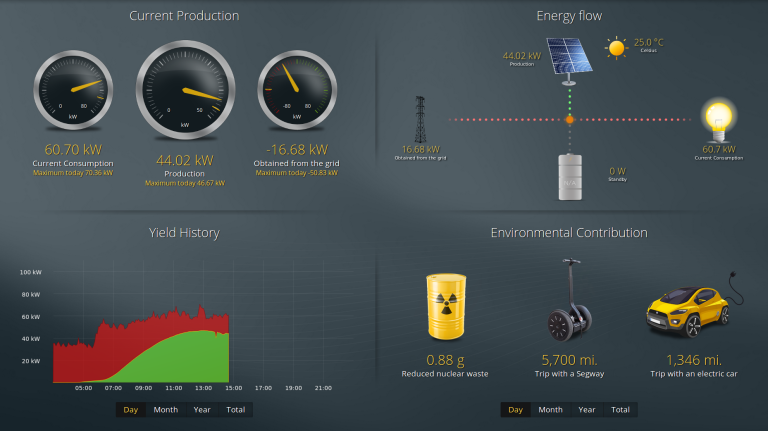
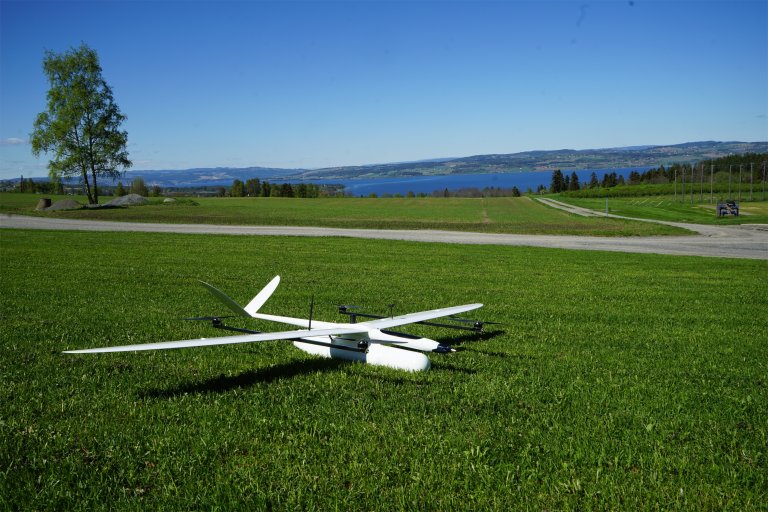
WP2 Fleet management of electrical vehicles
The objective of this WP is to realize a control and communication system for semi-/autonomous on-farm fleet management. A management shift into smaller and lighter tractors will require more vehicles to perform the same job as the original, large tractor, but such a shift should not increase the need for labor (i.e. for driving).
As a starting point, we will utilize our existing electrical UAVs, our electrical unmanned tractor robot, and a small, manned electric tractor and embed all vehicles within a control and communication infrastructure. The fleet will be used in the large-scale field trials in WP3 to (i) acquire accurate and detailed site-specific crop information, which will serve as input to the agronomic models for N rate recommendation and (ii) for targeted N fertilizer applications by a collaboration of the manned and unmanned tractor.
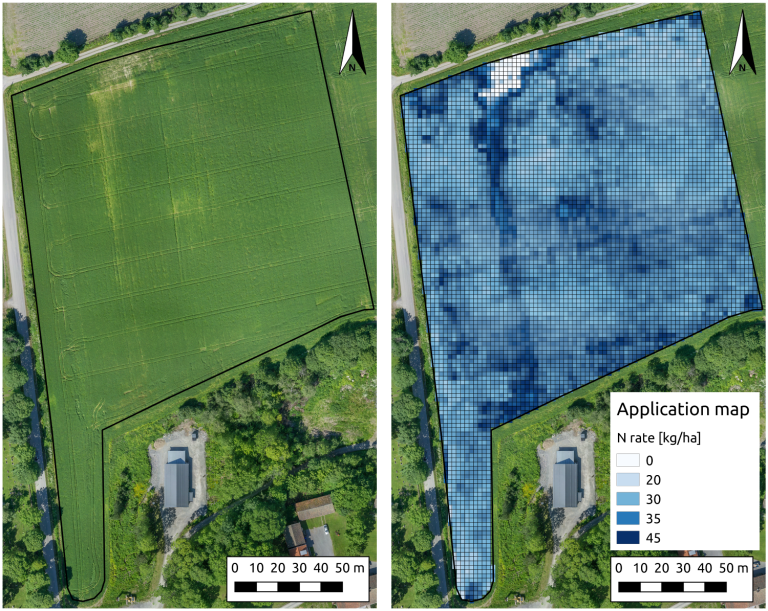
WP3 Precision fertilization
The objective of this WP is to develop a concept which enables electrically powered precision fertilization in spring cereals, with a spatial resolution higher than any known existing solutions, in order to optimize N use efficiency and minimize undesired N losses to the environment (i.e. N2O-emissions and NO3-leaching).
To do so, we will combine the detailed site-specific crop information obtained in WP2 with algorithms designed for transforming the sensor signals into N rates. This will form the basis for creating digital application maps, which will be used as input to a high-resolution fertilizer applicator, to be developed within this WP. Finally, targeted precise fertilizer applications will be performed by a collaboration of a manned and an unmanned tractor, as described and developed in WP2.
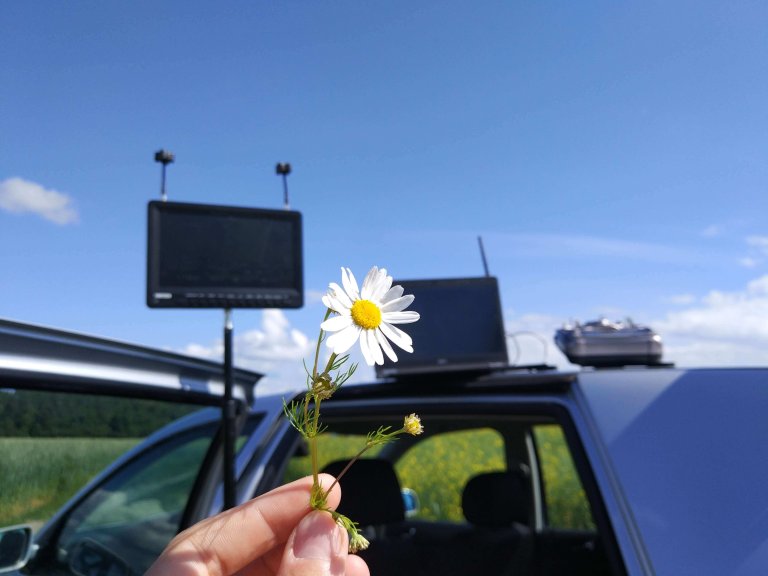
WP4 Overall assessments of energy aspects, sustainability, environmental, economic and policy-related potentials
The objective of this work package is to evaluate the concept SolarFarm partly at the base-case (farm) level and at a more aggregated level in terms of sustainability, environmental, economic and policy-related potentials.
In detail, we will use life cycle assessment (LCA) methodology to investigate the potential for changing energy carriers in work related to transport, soil, and crop management, to assess sustainability and environmental impact, and to analyze economic aspects and policy options for fossil fuel phase out in Norwegian agriculture.
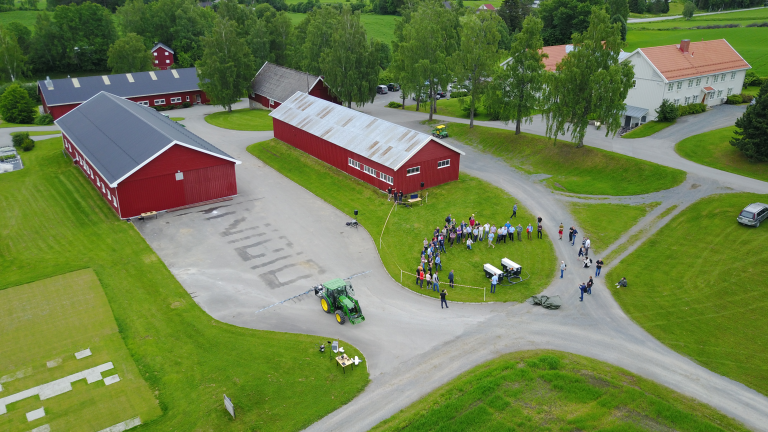
WP5 Communication, dissemination and publication
The objective of this WP is to increase the competence of all project participants (institutes, companies, farmers, and farmer advisors) in the fields of (i) solar on-farm energy production, storage, and use, (ii) digital and automated farm machinery management, (iii) precision fertilization, and (iv) aggregated analyses and potentials of the studied technologies on GHG-mitigation and other sustainability parameters.
Dissemination and publication will help to distribute the project’s results to a wider audience of farmers and advisors, fellow researchers, companies, authorities, policy-makers and the broader public.
